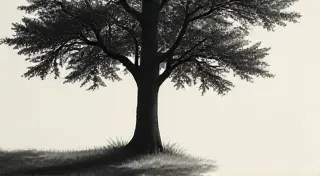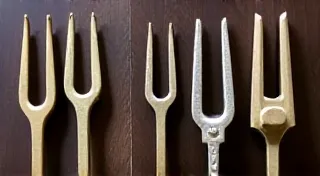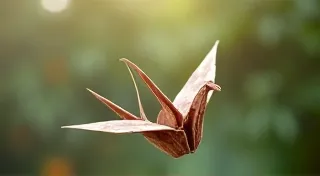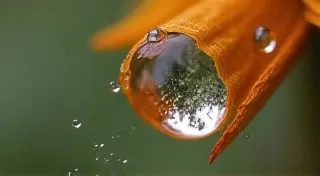Repotting's Echoes: Renewal & the Writer's Block Breakthrough
The scent of damp akadama, the grit of pumice clinging to my fingertips – these are the sensations that always pull me back. Back to the meticulous, almost meditative process of repotting a juniper bonsai. It's more than just a horticultural task; it’s a ritual, a conversation with a living artwork, and lately, it’s become a key to unlocking a creativity that had stubbornly retreated. For weeks, the words had simply refused to flow. The story I was trying to tell felt flat, lifeless, trapped. I knew what I *wanted* to say, but the language eluded me. Then, I turned to my junipers.
My workshop isn't solely dedicated to bonsai. Scattered amongst the pots and tools are relics of a different passion: antique accordions. My grandfather, a travelling musician, left me his collection, each one a testament to a bygone era of smoky cafes and heartfelt melodies. There’s a mournful beauty in their intricate bellows and keys, a tangible connection to stories whispered across generations. Just like junipers, these instruments require careful tending; bellows need repairing, keys need voicing, and the wood itself demands respect. The parallels are striking – both represent enduring craftsmanship, a deliberate resistance to the fleeting nature of trends.

The Juniper's Story
My oldest juniper, a Japanese Garden Juniper (Juniperus procumbens 'Nana') I affectionately call "Kiyo," is nearly fifty years old. Repotting him isn’t a simple task. It's a deep excavation – a chance to inspect the root ball, to tease out the circling roots, and to refresh the vital medium. You see, a juniper, especially one of Kiyo's age, doesn't simply *grow*; it perseveres. It battles wind, frost, and the relentless pull of gravity, its branches striving for sunlight with a quiet tenacity. The root system reflects this struggle. It becomes dense, compacted, and often, a tangled web that suffocates the tree’s ability to absorb nutrients.
Repotting isn’t about shock; it’s about rejuvenation. It's a recognition that even the most resilient organism needs support, a chance to breathe again. Just as a writer might need to step away from a project, to allow new perspectives to emerge, Kiyo needs this annual reset. I carefully untangled his roots, gently encouraging them to reach outwards, away from the confines of the old pot. It’s a moment of vulnerability for the tree, and it requires a delicate touch, a profound respect for its enduring spirit.
The Craftsman's Hand
The act of repotting always reminds me of the instrument makers, the accordion builders of generations past. They, too, faced challenges – sourcing materials, mastering complex mechanisms, and enduring the relentless demands of their craft. Each button, each reed, each strip of leather was meticulously chosen and painstakingly assembled. There's a shared ethos, a dedication to quality and longevity that transcends the specific medium. These aren't mass-produced objects; they are labors of love, imbued with the spirit of the maker.
And that craftsmanship isn't simply about technical skill. It's about understanding the *essence* of the material. A good accordion maker knows how the wood breathes, how the bellows expand and contract, and how the keys respond to the musician's touch. Similarly, a bonsai artist must understand the juniper’s growth habits, its response to pruning and wiring, and its inherent beauty. It's a symbiotic relationship, a constant dialogue between creator and creation.
Juniper Styling & Root Health
Of course, repotting is also an opportunity to subtly influence the juniper's styling. While the primary goal is root health, the moment of exposure allows for minor adjustments to the branch structure. Perhaps a branch needs to be repositioned to improve the overall silhouette, or a stubborn shoot needs to be pruned back to encourage new growth. The goal isn't to impose a rigid form but to gently guide the juniper's natural tendencies.
This year, I noticed a slight imbalance in Kiyo’s root system, with a noticeable lack of fine root development on one side. This indicated a potential nutrient deficiency or a minor drainage issue. I addressed this by incorporating a small amount of mycorrhizal fungi to the new substrate, which will help the roots absorb nutrients more efficiently. Paying attention to these details isn't just about keeping the juniper alive; it’s about nurturing its potential, allowing it to flourish and express its inherent beauty.
Speaking of care, it's crucial to address common juniper bonsai diseases promptly. Fungal infections, like juniper rust, can quickly spread and weaken the tree. Regular inspection and preventative measures, such as proper watering and air circulation, are essential. Similarly, red spider mite infestations, though small, can cause significant damage. A horticultural oil spray can often be effective in controlling these pests. A good juniper bonsai care tips guide is invaluable.
Winter Protection & The Breaking Through
As the seasons change, winter protection for juniper bonsai becomes paramount. Junipers are generally hardy, but extreme cold and drying winds can be detrimental. Protecting them from these conditions, whether by moving them to a sheltered location or employing protective wraps, can make the difference between survival and decline.

Watching Kiyo settle back into his pot, his roots once again nestled in the fresh akadama, a wave of clarity washed over me. The blockage I’s been wrestling with, the frustrating sense of being unable to articulate my story, began to dissolve. The process of tending to something so enduring, so resilient, had a strangely restorative effect on my own creative spirit.
It wasn’t about finding a clever metaphor or a brilliant plot twist. It was about recognizing the power of patience, the importance of tending to the foundations, and the inherent beauty of allowing something to breathe. Just like a juniper bonsai, a story needs space to grow, to evolve, to find its own natural form. And sometimes, all it takes is a little repotting – a chance to clear away the clutter and allow the underlying beauty to emerge. The act of focusing intently on the juniper allowed me to step away from the self-criticism and simply *see* my story again, fresh and alive. Exploring bonsai juniper varieties, and their unique characteristics, also triggered new ideas and perspectives.
The scent of damp soil lingered in the air, a subtle reminder of the enduring connection between the earth, the craftsman’s hand, and the quiet, persistent voice of creativity.





